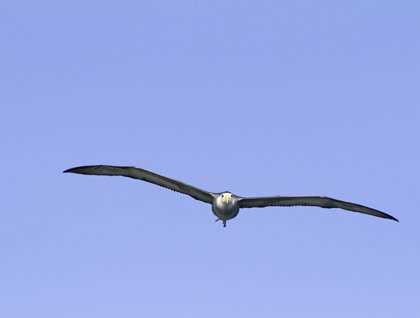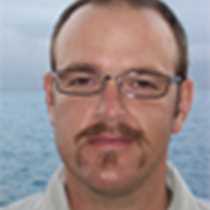This day is highly anticipated as we awaken at Gardner Bay at Española Island. A bright white coralline beach in the distance is littered with hundreds of Galapagos sea lions. We proceed to a small islet to snorkel in the deeper water as some visit the beach. The abundance of tropical and temperate species is found mingling with razor surgeonfish, snappers, endemic black-stripped Salemas, and creole fish being seen by all. A sea lion flits by with a short intention to investigate these strange floating creatures it finds. A small reef shark slowly passes under us and we see its elegance as it heads to deeper water. In the shallows our younger explorers hop in and out of the water with young sea lion pups following suit and we wonder who is playing with whom…Espanola mocking birds decide to rifle through our equipment that we have left on the beach. A few individuals from different “clans” decide to fight over territory, with wings and tail feathers bobbing up and down from their displays. Inland greenery mixes well with the white beach and turquoise waters as we return to our floating home.
A short navigation brings us to Suarez Point on the southwestern part of the island where we explore an incredibly dense habitat, which means that we have to “step” over the wildlife at times. Large waves pound the coast and curve around the point close to our landing site. The exposed rounded basalt boulders are covered in areas by some brightly colored marine iguanas. Upon the path we find both aspects of life and death, with Espanola lava lizards feeding on the various insects utilizing the carcass of a large sea lion for their necessities.
Mesquite and salt brush surround us as we head towards the southern cliffs. Nazca boobies find this a perfect place for roosting or nesting, as it is proper platform for heading out to the open ocean. Red-billed tropicbirds pass us overhead with high-pitched screeches and we pass a few blue-footed boobies on the path. A mist rises above the southern cliff, which is caused by large waves being compressed into a natural fault that is found in the basalt lava flow. Galapagos hawks find elevated positions on the boulders that are our path. Some hawks even eye us with interest as they look for prey. As incredibly large bird is spotted in the distance and as it approaches we are happy to find one of the first waved albatrosses of the season returning to their island. Endemic not only to Galapagos but also to this specific island and we find beauty in this continuation of life. A warm glow lights the sky as we leave this small piece of enchanted Galapagos that is Espanola Island.









